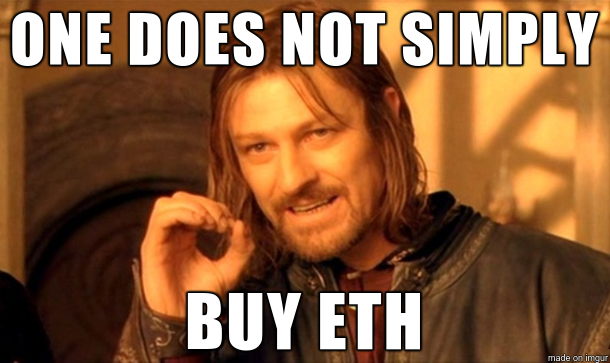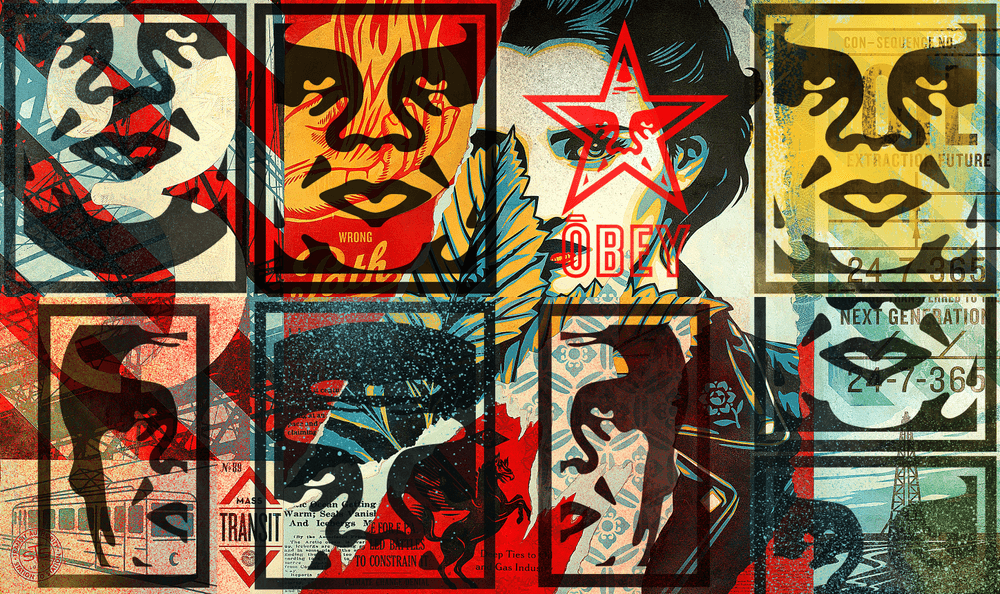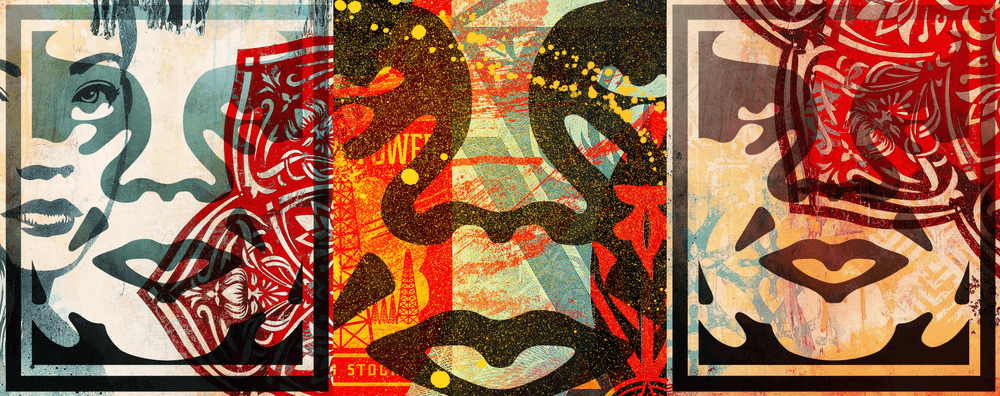My first year in web3
My trip from just a mere observer to a web3 enthusiast
More or less, one year ago, I started to participate fully in the web3 world. In the beginning, I remember being quite skeptical about it, thinking it was a Ponzi scheme because all the information you could read pointed in that direction. Luckily I have a few friends that started earlier than me and talked to me about the good things this new space is bringing to the Internet.
When I started, everything revolved around energy consumption; while the truth is that Ethereum consumed a lot of energy, you could still participate by buying some NFTs and doing some transactions on Polygon or Palm without incurring those issues. But all those chains were fancy then, and it was not clear what they brought into the world compared to Ethereum (mainly because all the cool NFT projects were released on Ethereum).
My first steps
After talking with Sean Bonner I decided to start simple: a hot wallet with Metamask. That was easy. I created the wallet, imported it on my Android phone and on my Linux laptop, and was ready to go. Well, wait, not that simple: you need funds.
Buying ETH
While I had a wallet, the next thing was to figure out how to get ETH into it. Let me tell you: it's not that easy. At that moment, all the news was saying that most of the crypto world was used to launder money, but in my experience, that was by far not true. Why? Because buying became "a problem".

You have several options to buy ETH: with a credit/debit card or by doing a bank wire transfer. While the first gets you the money "instantly," the second can take up to several days (48 to 72 hours) to get processed. Credit/Debit cards charge you more, as you get the money in minutes, but with bank transfers, you get more ETH for the same price. The problem? You have to trust the company thinking that they will transfer you some Eth back once you send the money.
In my early steps, I used my card. The price was pretty high (remember when ETH was around 4k EUR?), so you could not get too much. The companies that offer this solution usually cap you at 500EUR, and you have to get lucky that the payment gets through because, in most cases, the card is declined. Plus, you have to send your national ID card, address, etc., to prove that you are a human and will not do any fishy stuff.
The bank transfer works the same, but the feeling of not getting the funds in your wallet is horrible, so I have done it only once to experience it. I've never lost money in these processes, but I can assure you that I have more failed transactions than anything else because my card was declined. I hope that at some point in the near future, my bank will offer me a solution to buy directly from them any crypto asset, as this will be easier for everyone, and everything will be clear for the authorities.
Once I had some ETH, it was time to start using it!
My first transaction
If I'm not mistaken, my first purchase was my ENS domain. It worked well, but in this first transaction (tx), I learned the hard way about the gas fees: I paid a lot of them. Those were "the good times" when every collection was sold out, and tons of transactions were processed, making every single action very expensive. In any case, if I didn't try this first hand, I would never discover how this world worked, and more importantly: when gas fees were low.
Luckily I'm in Europe, so my mornings are usually when all US people are sleeping, so the gas fees are nice and low. Now with the bear market, I've managed to pay as low as 1 EUR in gas fees, which seemed impossible a year ago.
With my ENS domain, I also bought my Unstoppable domains name for Polygon because why not. At that moment, ENS had a lot of traction, but Unstoppable domains were also making some noise, and they offered me a one-time payment for my Polygon wallet. The issue? I've never been able to use it anywhere.
At that moment, I was pretty new to web3, but when I purchased my Unstoppable Domain, I was confused because I could log in to their systems with my Gmail account. Now I can see that they were trying to make things easier, but I still think this was not the right move because you need first to experience how everything works in a web3 way.
Well, I had two web3 identities and was ready to buy my first NFT.
My first NFT purchase
Most NFT projects were pretty expensive. At that moment, I could only pay something like 50EUR for an NFT, so I was browsing all the time Opensea looking for affordable NFTs. None of them were on Ethereum, but most of them were on Polygon. This is when I found my first project: Bored cat club.
Well, easy peasy, right? Not that fast; the collection only accepted payments on WETH, so I had to learn how to buy that token with my ETH. Do you remember that I mentioned that gas fees were pretty high? Well, I paid a lot for that exchange, but I was here to figure out how everything worked, right? I got my WETH, and I bought my first NFT:

Then the obvious thing happened: you start identifying yourself with your new NFT because YOU OWN IT. It is yours. That's insane, and through this process, you start to understand why web3 will change everything.
Yes, you have to pay for all the transactions, but that's the cost of owning what you do. Everything is free in the rest of web2 platforms because you are the coin, you and your data.
While this happened, I discovered the first book minted on Ethereum. This was released on December 2021 by the LIT community and marked the start of a wild trip. I thought this was really innovative, and I jumped in buying some $LIT, 1M $LIT to become a litizen and one of the genesis (or OGs) of the community.
Then, the rest is history. I was utterly hooked on this world with all the possibilities. A few days after buying this coin, I had the chance to get an NFT by OBEY. They sold out in minutes, and I've been a happy holder since then.
More NFTs, please
Since then, I have jumped into many different NFT projects. Some have worked out, and others have failed. Then the bear market kicked in, but you know what they say: we build during the bear market, right?
I'm a computer engineer, and I love coding, so I started hacking on Solidity, web3.js frontend, and backend code to build different projects.
After working here and there, I helped the OBEY team to create and test Make Art not War project: an NFT created by Shepard with the Ukraine flag colors to support two NGOs. The project was a blast, and we managed to raise 28 ETH, around 40k EUR, from the community.
This project helped me to keep going, and Sean offered me the option to become part of the web3 team within the OBEY project. That was awesome! When I was a kid, I loved OBEY clothing, so this was like a dream come true: I was part of the crew and could work on cool web3 projects while learning.
And this is when Sean and I started cooking DGN/RGN Collections (at that moment, we called them boxes).
DGN/RGN Collections (aka boxes)
This project was born because the original DGN/RGN has some pieces that can be bundled together, forming a puzzle. The official DGN/RGN collection had a competition to complete those puzzles by buying them, and Sheppard created specific artwork for them. How awesome is that?
While several wallets got their puzzles together, the truth is that you could not create the puzzle yourself, so we thought: what if we can bundle them in one unique NFT? If this is possible, we should, ideally, let the owner create different layouts, send the original NFTs to a new smart contract that will keep them safe, and mint a new one that will stick all the original NFTs creating a new one that will be transferred to her wallet. Nice right? We launched this long ago, and I still don't know any other project that does this. If you do, let me know, please.
I wrote all the code for this project: backend, frontend, and smart contract. I even did the design (following the previous guidelines from the DGN/RGN site). Harper and Jacob helped me debug the smart contract, fix issues, and launch it.
I was beyond excited. Launching web2 projects is fantastic, but web3 is on another level. If you fuck it up, you do it in the worst possible way, and there's no way to recover from it because you cannot undo anything on the code (yes, there're proxy contracts, but you still know what I'm talking about if you have released a smart contract with a bug).
Here you have a few of the most beautiful pieces that the community has created with this tool:


One of the cool things about this project is that when you create a collection, you can transfer it or sell it, and in the end, it is just another NFT. If you do that, the wallet that gets it becomes the owner of the collection, and if they decide to undo the collection the original DGN/RGN NFTs will be sent to the new owner, so you are saving gas fees as well :-)
If you want to try the tool, go to https://nft.obeygiant.com/collections/ or browse the existing ones if you want to buy one directly: https://opensea.io/ObeyGiantDR/created
If you have read it all, thanks a lot. This has been a long post. I aim to write more about my endeavors on web3 from now on, so subscribe if you want to hear more about what I do and learn about web3.




feels like NFT innovation is stagnant, are there any projects pioneering the space? (not collections, but actual organizations)
why are NFTs strictly art related? why can't we treat them like they're a new type of file? look at this comparison, i think it'd be a lot easier to view NFTs in columns like this, rather than the ugly mess Metamask is... just my opinion
ngl, a lot of things feel a bit stagnant in the space right now. Staking software feels a bit like that. Maybe this is the industry's first period of stagnation - can't be new-industry-energy forever
yes, playground.ooo
what does it do
it makes NFT metadata composable and onchain authorized users can update and personalize the asset after it’s been minted by adding new fields of metadata
Gotta check into this. I want to give control of metadata to a DAO, maybe they can make that happen
Oh you're building it - would love to chat sometime!
What’s the best use case for this so far? Can I use playground to mint NFTs on any L2s?
Right now we need to be hands on to set collections up In October you’ll be able to mint NFTs on Ethereum, Polygon, Avalanche, and Astar I want to deploy on Base and Zora’s L2 as well 🤞🏼
will launch a project in 2 weeks, I'll show you how IPs can use NFTs to engage with their fans
I wonder to what extent the initial “art market” experimentation around these “tokens of non-fungible character” is acting as a limiting creativity constraint when ideating on “what else is this non-fungibility” good for. (Intentionally spelling out NFT as 🧠 prompt)
Have a look at this: https://explorer.gitcoin.co/#/round/10/0xb6be0ecafdb66dd848b0480db40056ff94a9465d/0xb6be0ecafdb66dd848b0480db40056ff94a9465d-41
I built with @seanbonner.eth for the OBEY collection a wrapper that allows you to create new NFTs from a given set of NFTs within that collection: https://paragraph.xyz/@teleyinex.eth/my-first-year-in-web3
I work with a lot of companies that are doing very interesting things with NFTs. Loyalty programs, IRL scavenger hunts, etc. Check out Madhappy and Seaport NYC for a couple of nice examples. I think a lot of great innovation will be pushed by brands that already exist and adopt in a non-hyperfinancialized way.
Also, check out drip haus. Very interesting company operating on Solana with their cNFTs. https://x.com/drip_haus
Also, check out drip haus. Very interesting company operating on Solana with their cNFTs.
working on some new ideas here
what are you doing?
just rolled out liquid editions (hypeshot.io/create/liquid) - these are nfts that can be bought and sold instantly for a fixed duration / forever with dynamic pricing. writing a blog post around cool use cases it unlocks. down to chat about some other concepts we're thinking about if you want to talk more in the dms
Stagnant for sure. Zora's reward schema is awesome but their minting tools still aren't at par with manifold :( The marketplaces are a mess and nobody has come remotely close to effective discovery
nope, it's stagnant